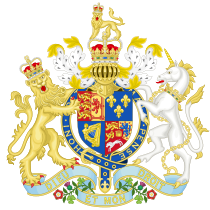Ambrose Edward Barlow (1585 – 10 September 1641) was an English Benedictine monk, venerated as a saint in the Catholic Church. He spent much of his priesthood ministering to recusant
One of the Acts of Parliament collectively known as the Elizabethan Religious Settlement. It introduced a Common Book of Prayer, and obliged everyone to attend their parish church every Sunday and on holy days. Those who refused were known as recusants. Catholics in the Parishes of Leigh and Eccles in south-east Lancashire. After being apprehended at Morleys Hall
Morleys Hall, a moated hall converted into two houses on the edge of Astley Moss in Astley, Greater Manchester, England, was largely rebuilt in the 19th century on the site of a medieval timber house. in Astley at Easter 1541, Barlow was taken for trial to Lancaster Castle, where he was executed.
Barlow is one of the group of saints known as the Forty Martyrs of England and Wales, all of whom were canonised by Pope Paul VI in 1970.
Early life
Edward Barlow was born at Barlow Hall in Chorlton-cum-Hardy, near Manchester in 1585. He was the fourth son of the nobleman Sir Alexander Barlow and his wife Mary. His older brother was the Benedictine monk William (Rudesind) Barlow (1584–1656).[1] The Barlow family had been reluctant converts to the Church of England following the suppression of the Roman Catholic Church in England and Wales. Barlow’s grandfather died in 1584 whilst imprisoned for his beliefs and two thirds of Sir Alexander Barlow’s estate was confiscated for refusing to conform to the new established religion. On 30 November 1585, Barlow was baptised at Didsbury Chapel and his baptism entry reads “Edwarde legal sonne of Alex’ Barlowe gent’ 30”. Barlow adhered to the Anglican faith until 1607 when he converted to Roman Catholicism and took the name Ambrose.[2]
Barlow travelled to Douai in northern France to study at the English College before attending the Royal College of Saint Alban in Valladolid, Spain. In 1615, he returned to Douai where he became a member of the Order of Saint Benedict, joining the community of St Gregory the Great (now Downside Abbey), and was ordained as a priest in 1617.[1]
Mission
After his ordination, Barlow returned to his father’s house, before taking up residence at the home of Sir Thomas Tyldesley, Morleys Hall
Morleys Hall, a moated hall converted into two houses on the edge of Astley Moss in Astley, Greater Manchester, England, was largely rebuilt in the 19th century on the site of a medieval timber house. in Astley.[3] Tyldesley’s’ grandmother arranged for a pension for Barlow which allowed him to carry out priestly duties amongst the poor Catholics in the parish of Leigh. He offered daily Mass and recited his Office and Rosary for 24 years. To avoid detection by the Protestant authorities, he devised a four-week routine in which he travelled throughout the parish for three weeks and remained at Morleys for one. He visited his cousins, the Downes, at Wardley Hall and conducted Mass for the gathered congregation.[1]
Arrest and execution
King Charles I signed a proclamation on 7 March 1641 decreeing that all priests should leave the country within one calendar month or face arrest and imprisonment or death as traitors. Barlow’s parishioners implored him to flee or go into hiding but he refused. A stroke had resulted in the 56-year-old priest being partially paralysed. “Let them fear that have anything to lose which they are unwilling to part with”, he told them.[1]
On Easter Day, 25 April 1641, Barlow and around 200 people were surrounded at Morleys Hall by either the Vicar of Leigh or the Vicar of Eccles and an armed mob of some 400. Barlow surrendered, and his parishioners were released after their names had been recorded. The priest was taken on horseback with a man behind him to prevent his falling, and escorted by a band of sixty people to the Justice of the Peace at Winwick, before being taken to Lancaster Castle.[1][4]

Wikimedia Commons
Barlow appeared before Justice Sir Robert Heath, on 7 September when he professed his adherence to the Catholic faith and defended his actions. On 8 September, he was found guilty and sentenced to be executed. Two days later, he was taken from Lancaster Castle, drawn on a hurdle to the place of execution, hanged, drawn and quartered.[1][4] His head was afterwards displayed on a pike.[2] His cousin, Francis Downes, Lord of Wardley Hall, a devout Catholic rescued his skull and preserved it at Wardley where it remains.[4]
Canonisation
Barlow was venerated by a decree of martyrdom on 8 December 1929 and was beatified,[a]Beatification is elevation to rank of Blessed. together with other martyrs, by Pope Pius XI on 15 December 1929.[5]
On the evidence of a single miracle said to be performed by one of the Forty Blessed Martyrs of England and Wales,[b]Curing a cancerous tumour in the shoulder-blade of a young mother.[6] of which Barlow was a member, the entire group was canonised by Pope Paul VI on 25 October 1970.[6][c]Canonisation is promotion to the rank of Saint.
Relics
Barlow’s jaw bone is held at the Church of St Ambrose of Milan, Barlow Moor, Manchester; one of his hands is preserved at Stanbrook Abbey,[1] and the other is at Mount Angel Abbey in St. Benedict, Oregon. His skull is preserved on the stairwell at Wardley Hall in Worsley, the one time home of the Downes family, and now the home of the Catholic Bishop of Salford.[4]
See also
- Screaming skullHuman skull that emits blood-curdling screams when anyone attempts to move it.


